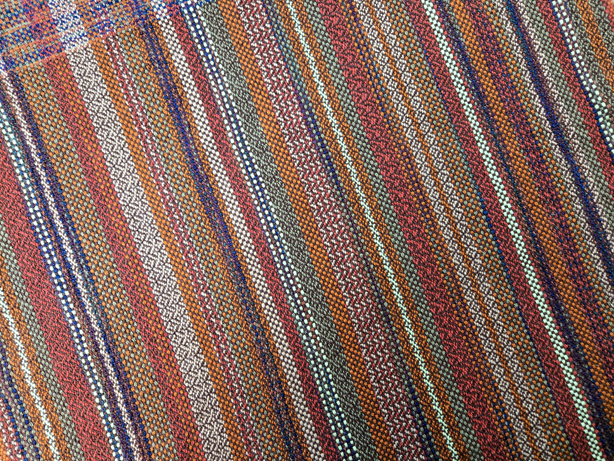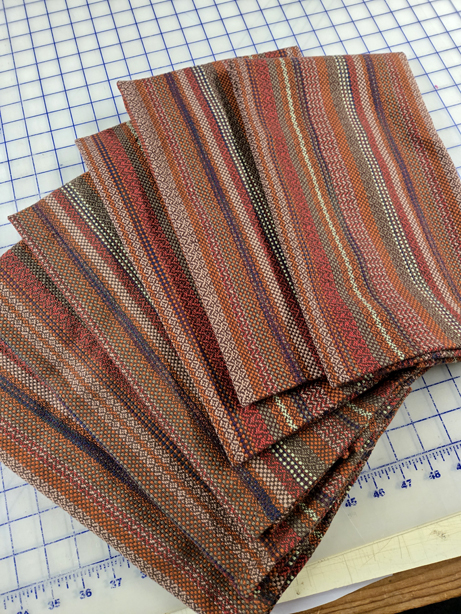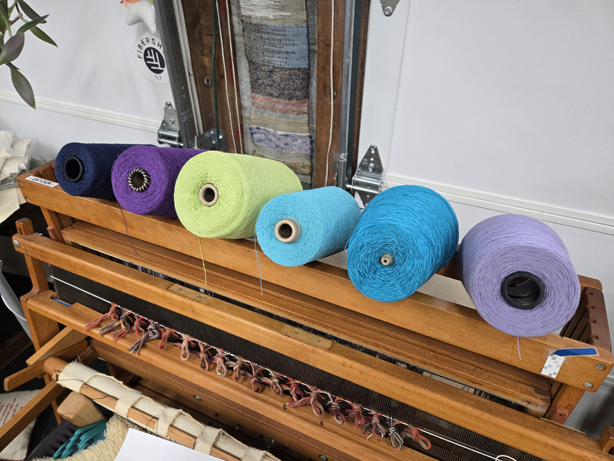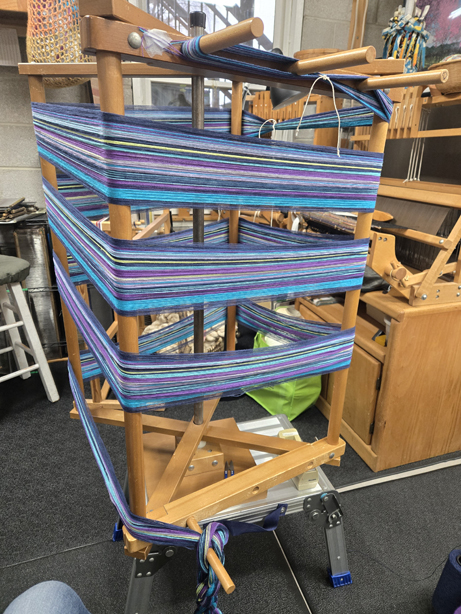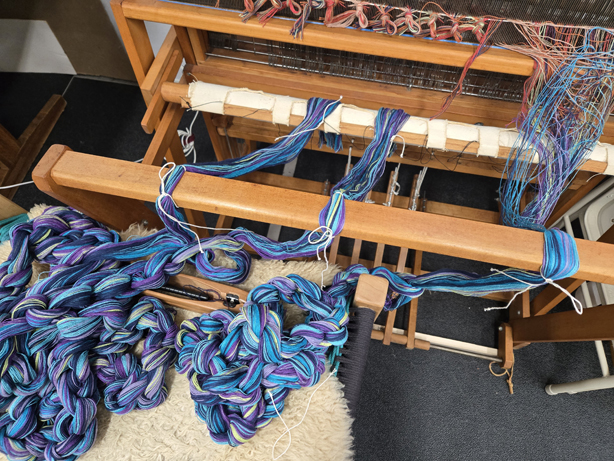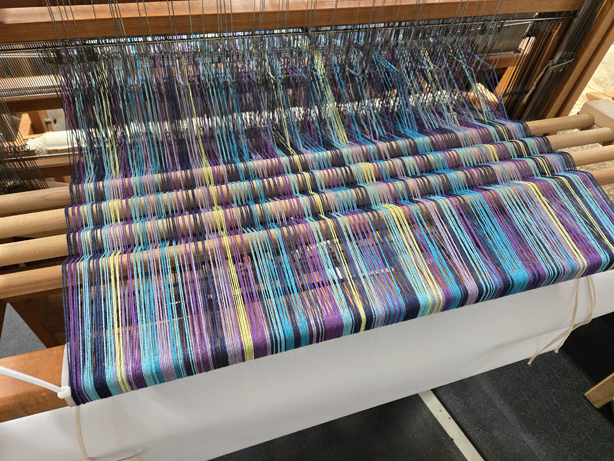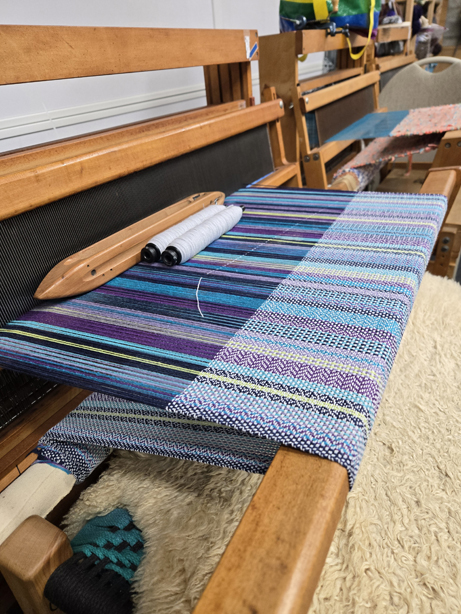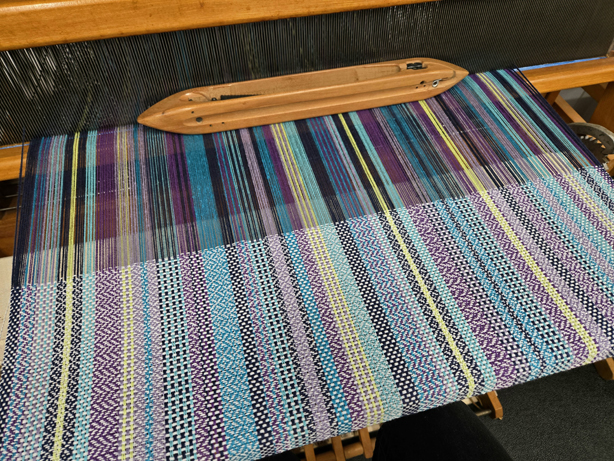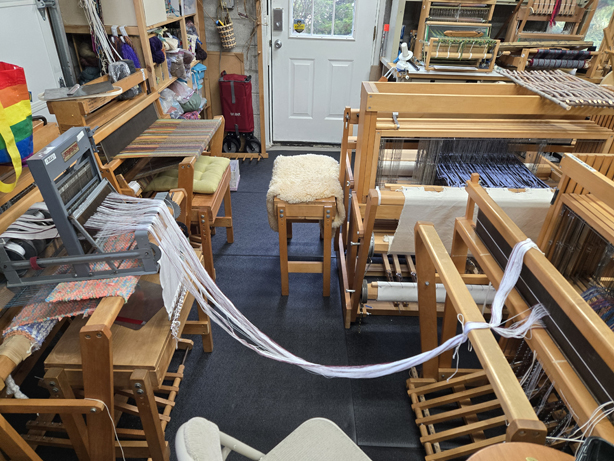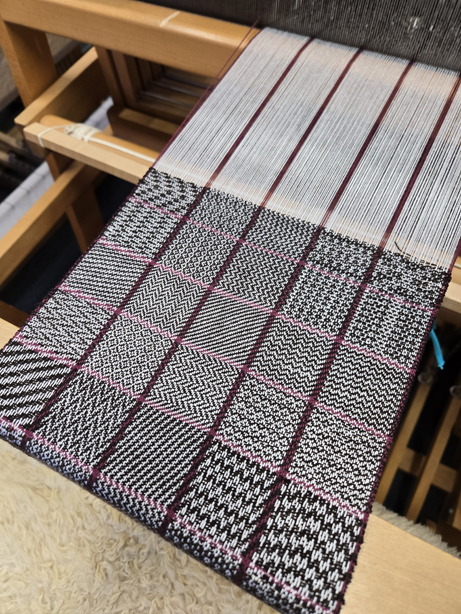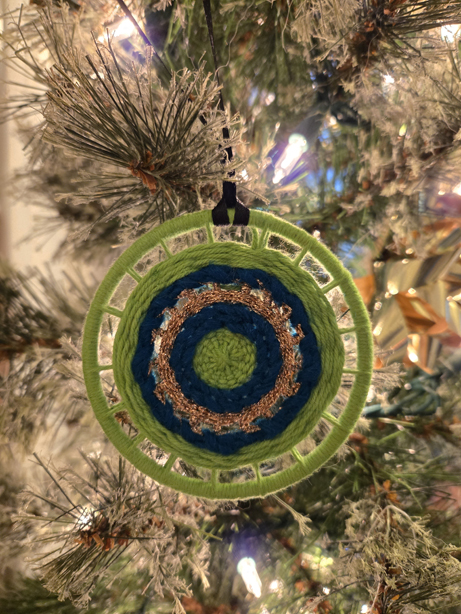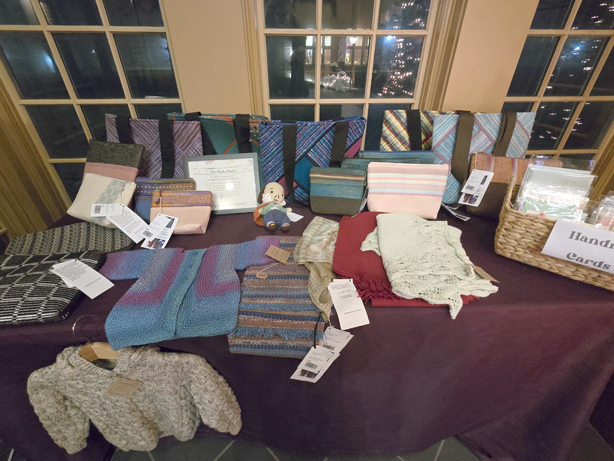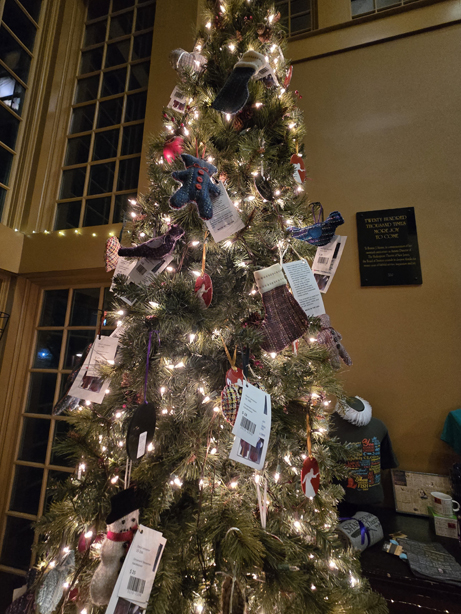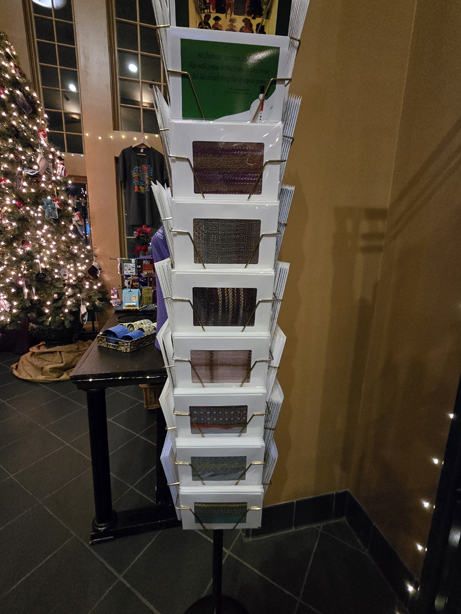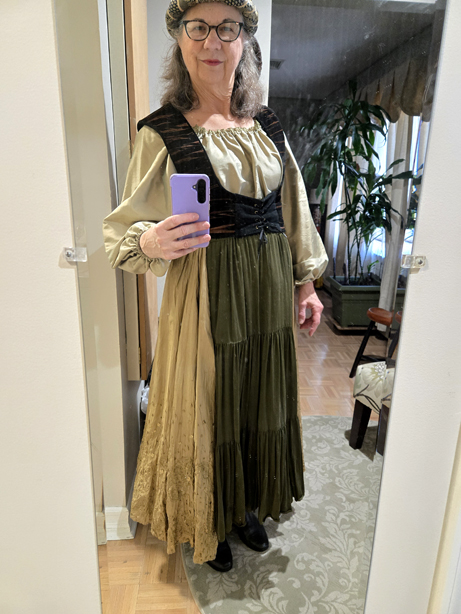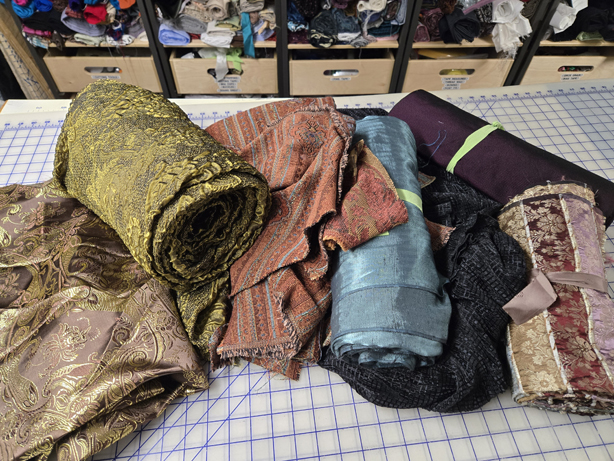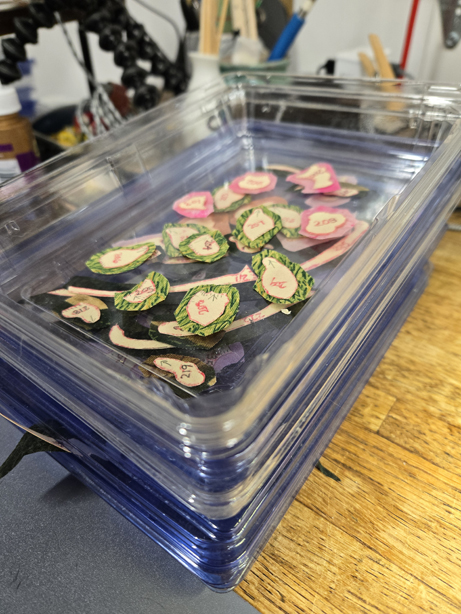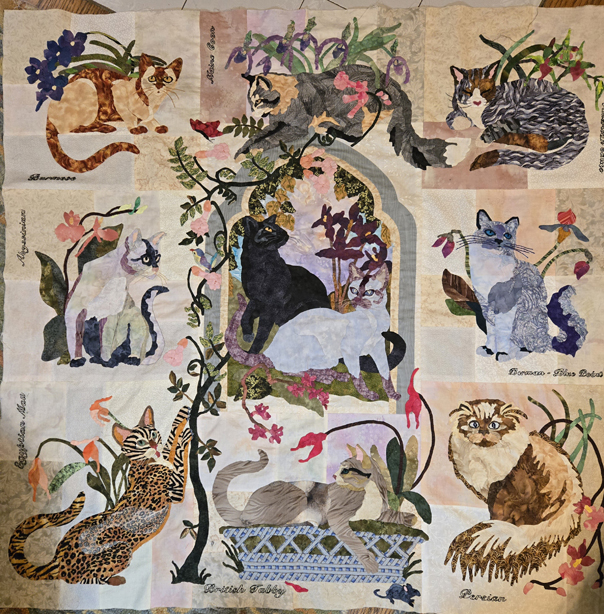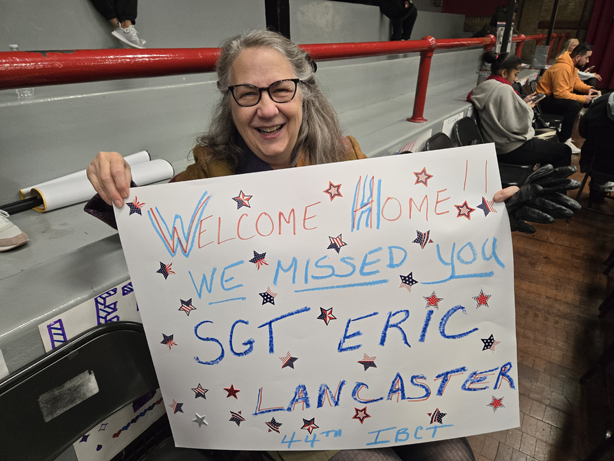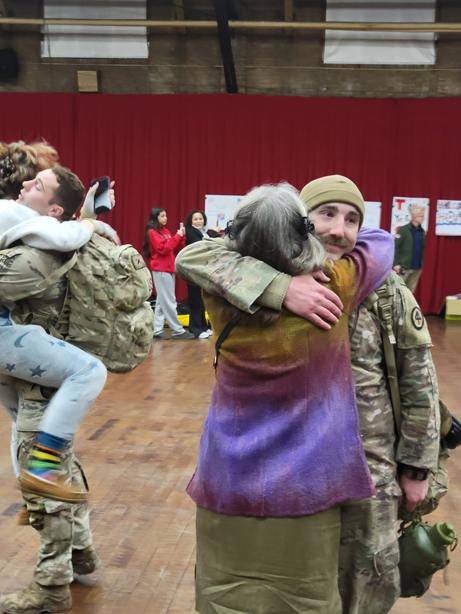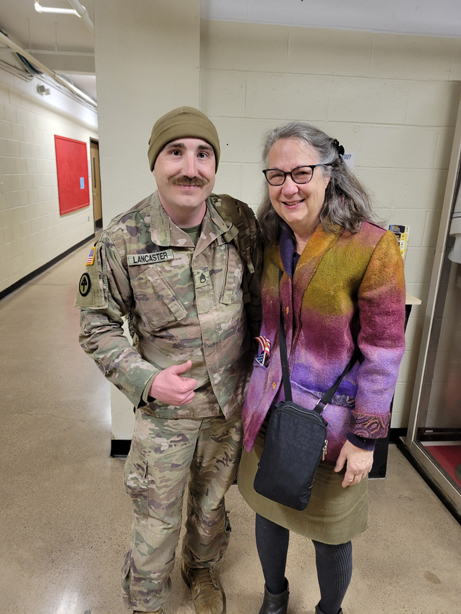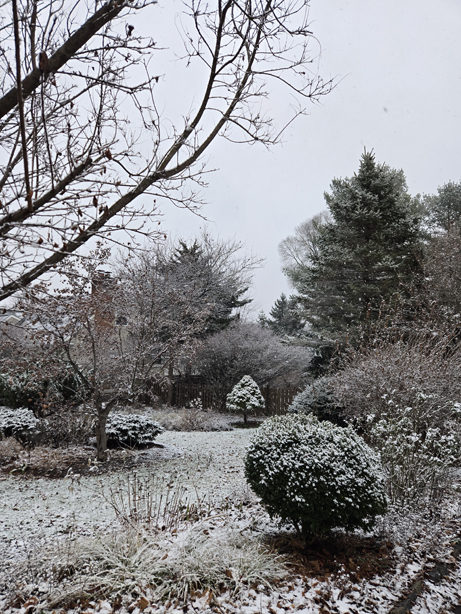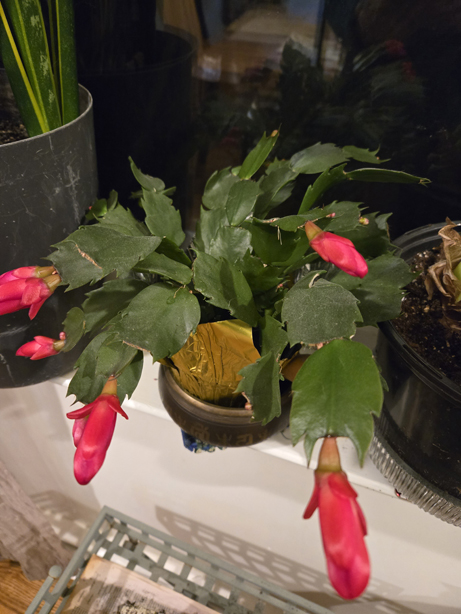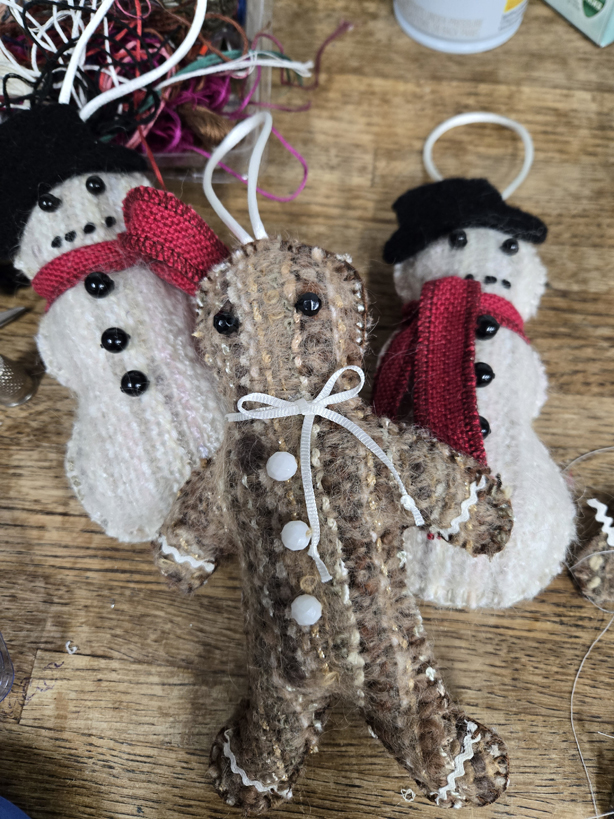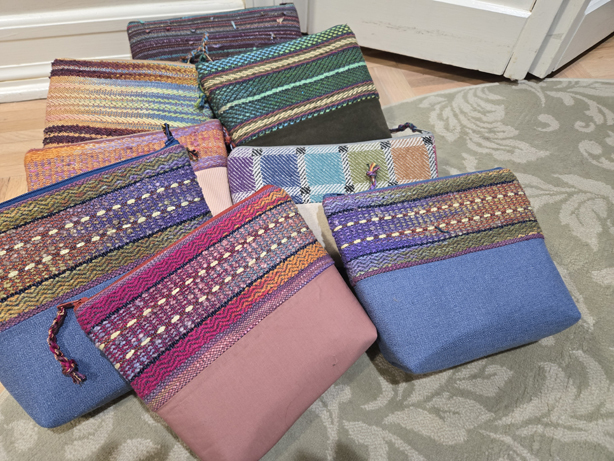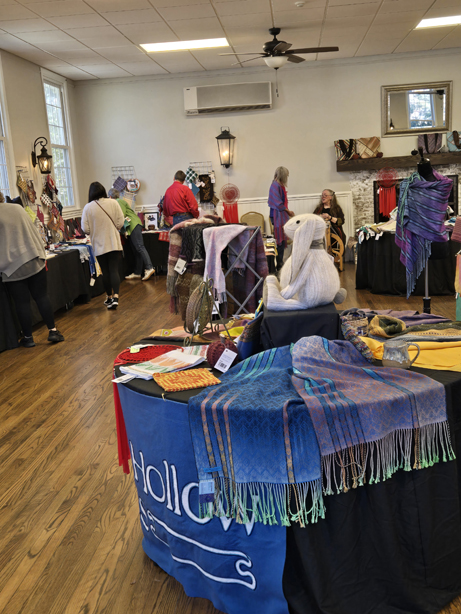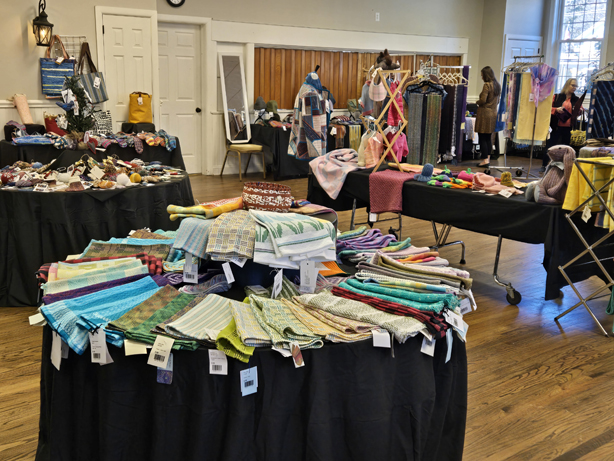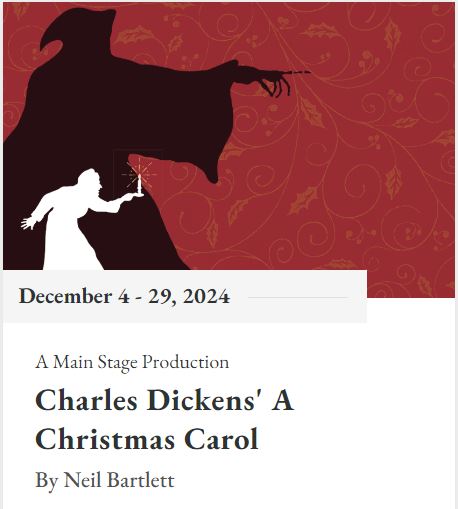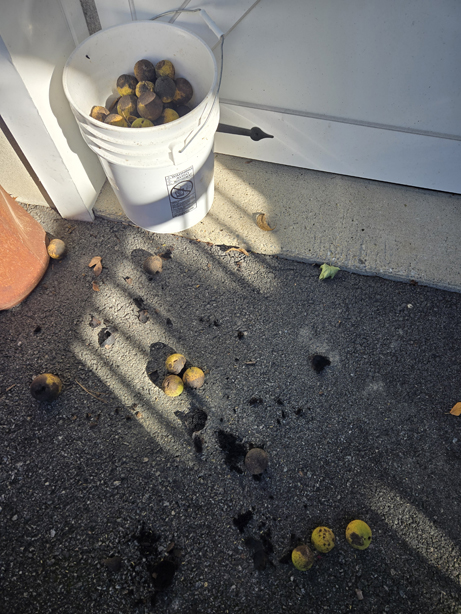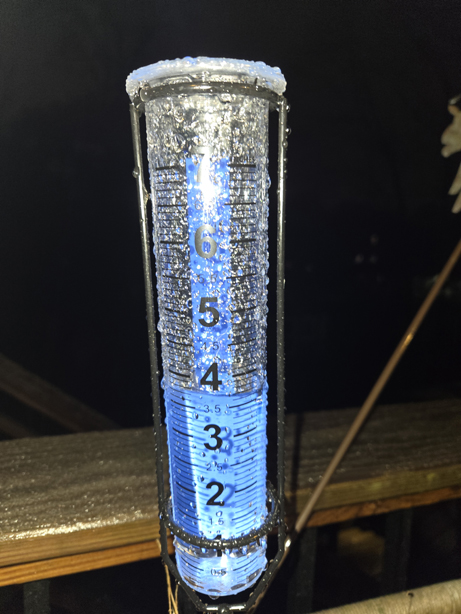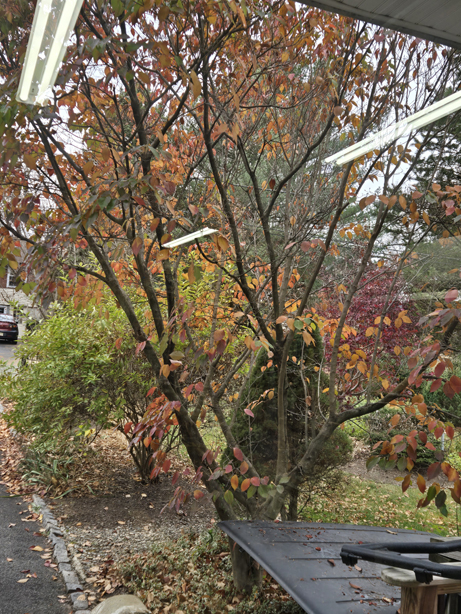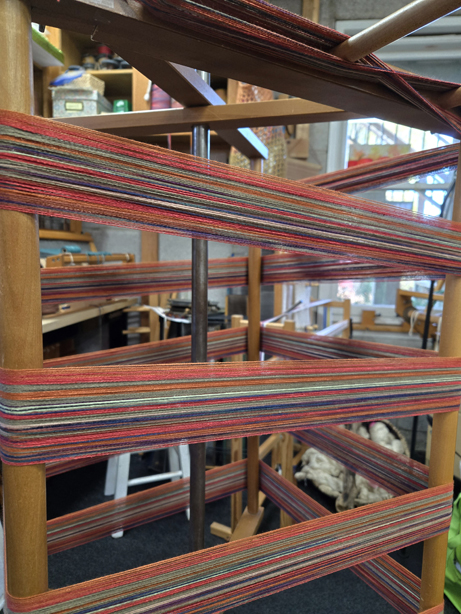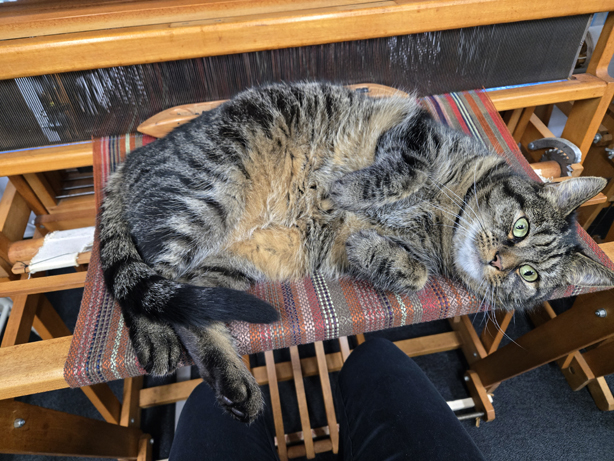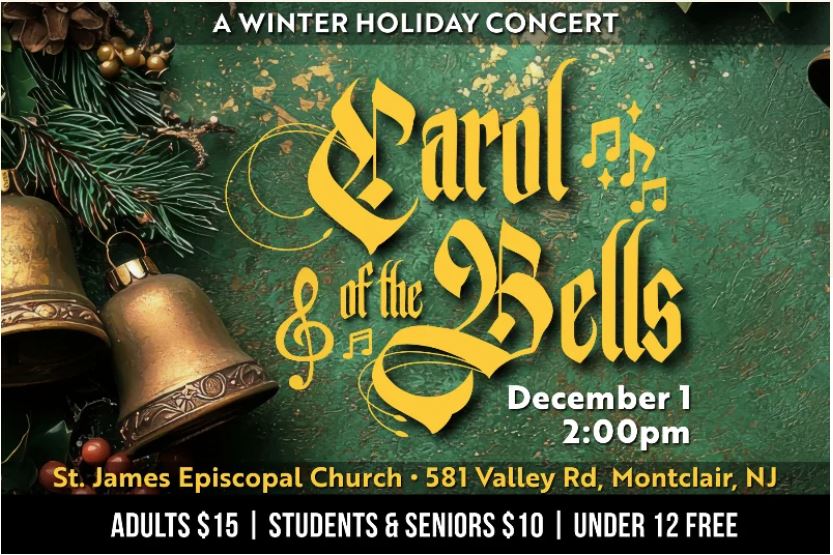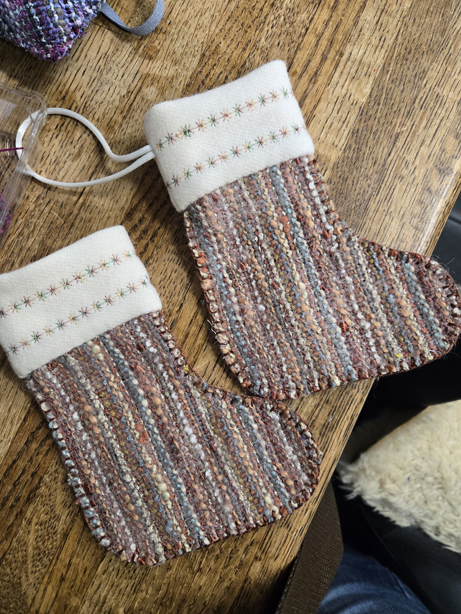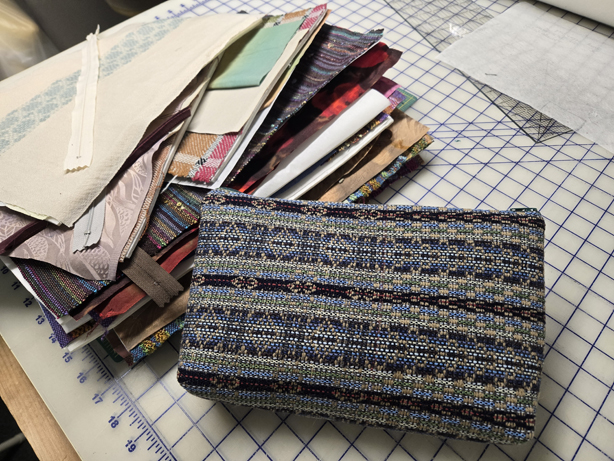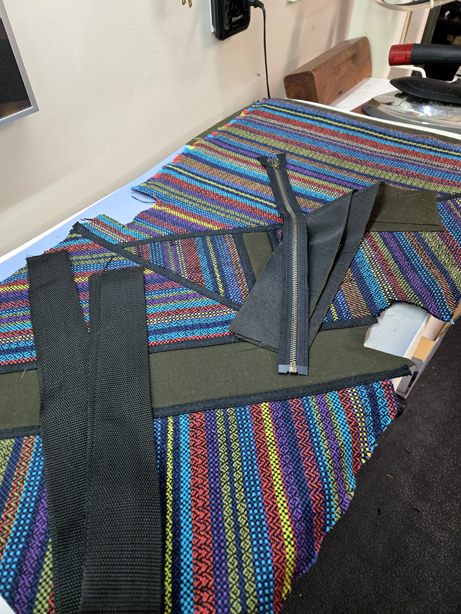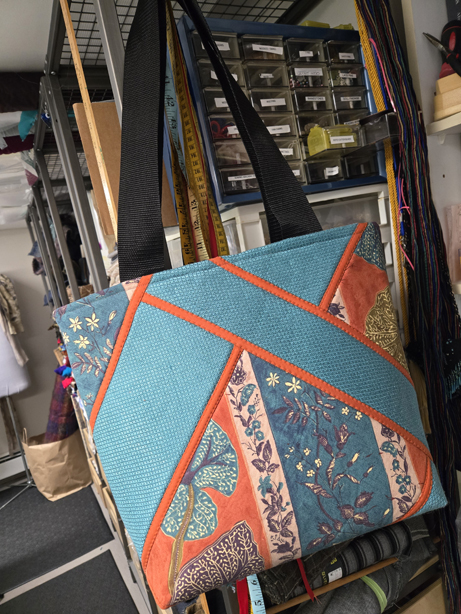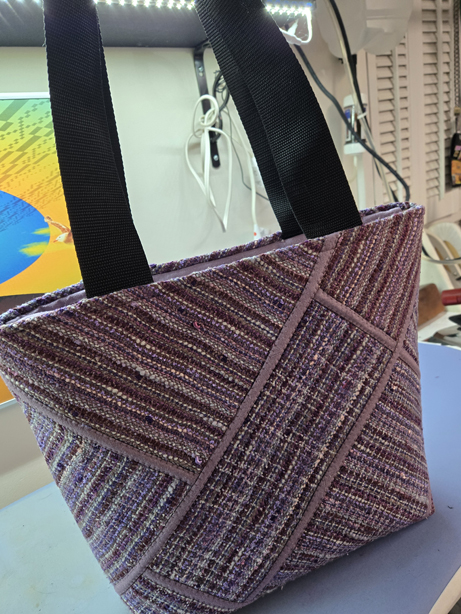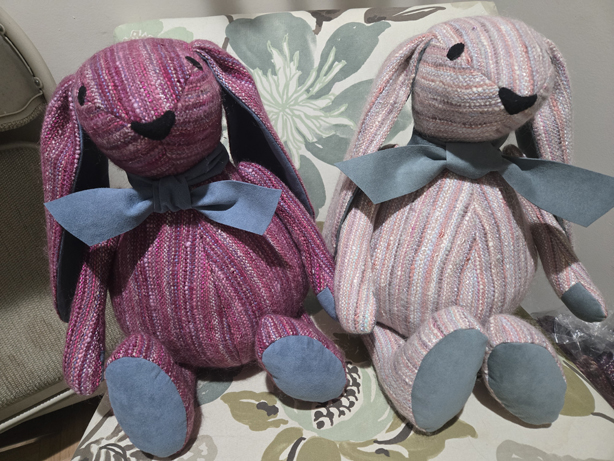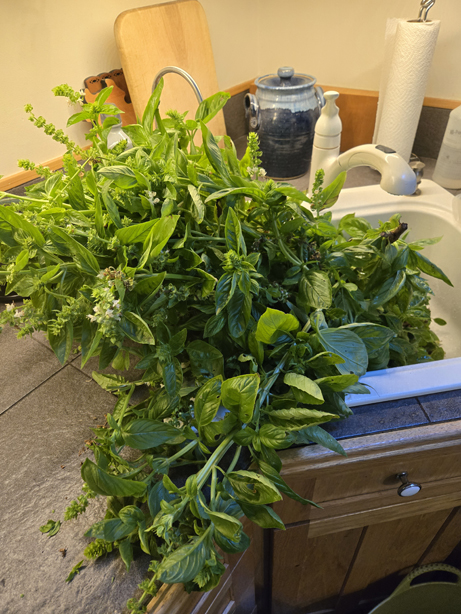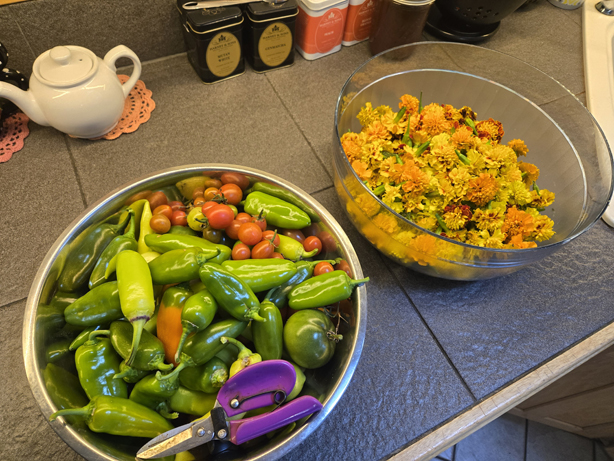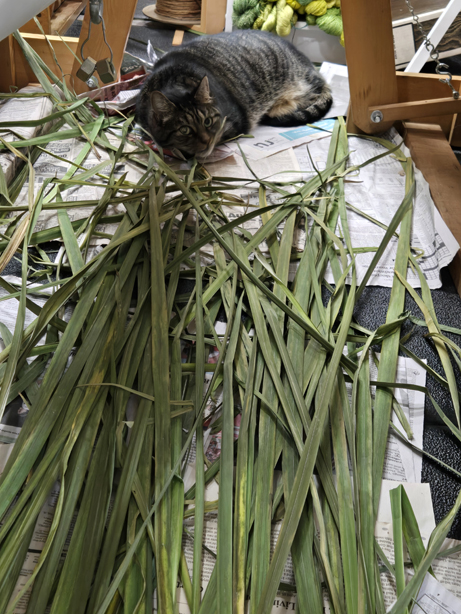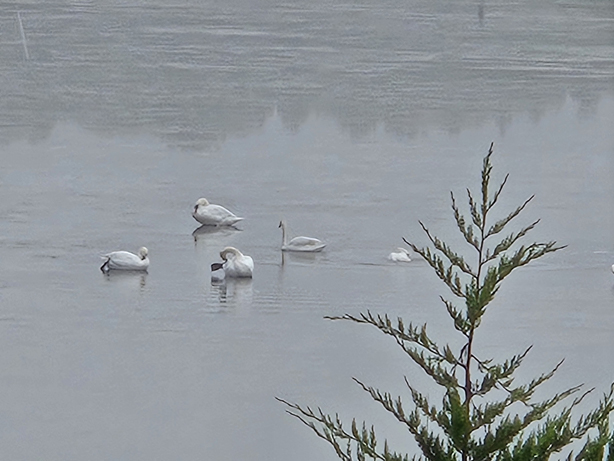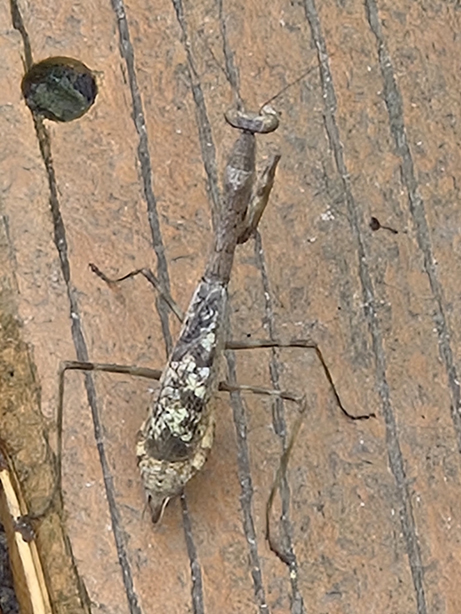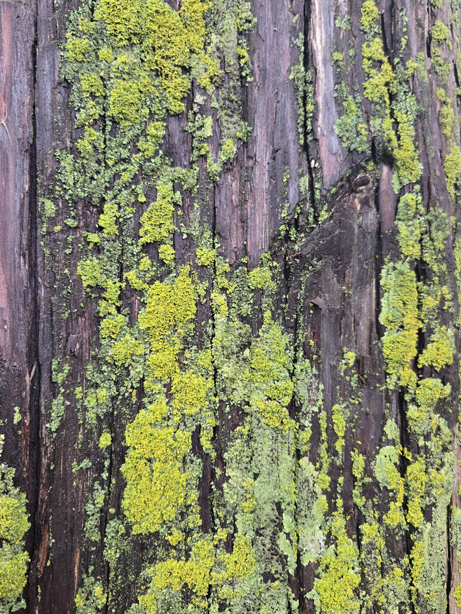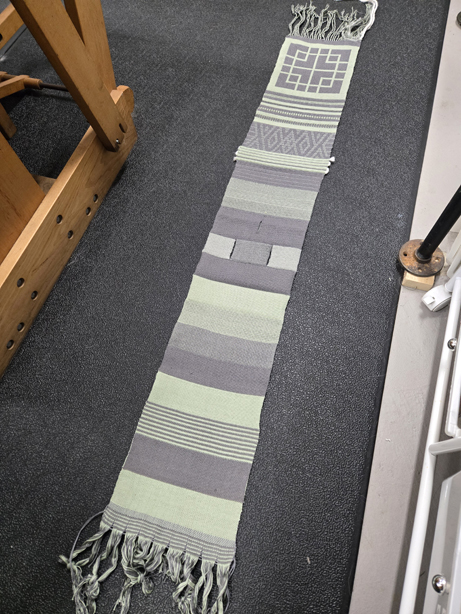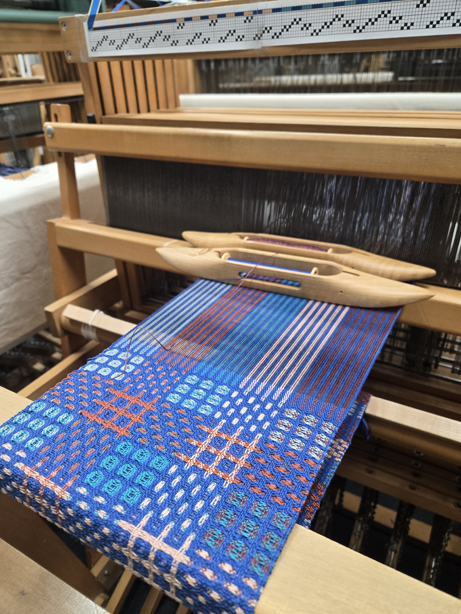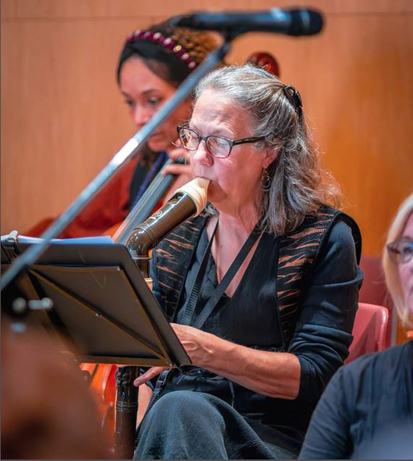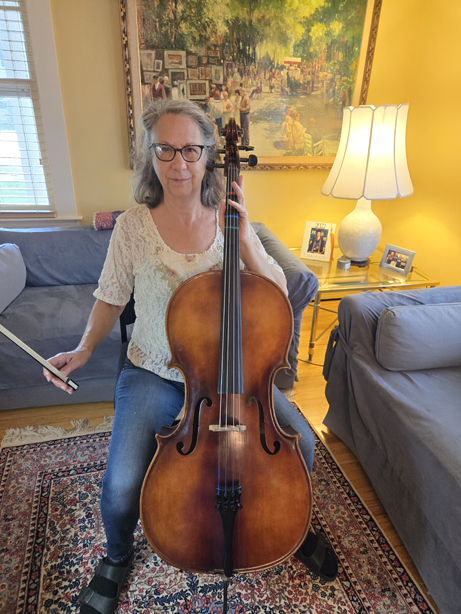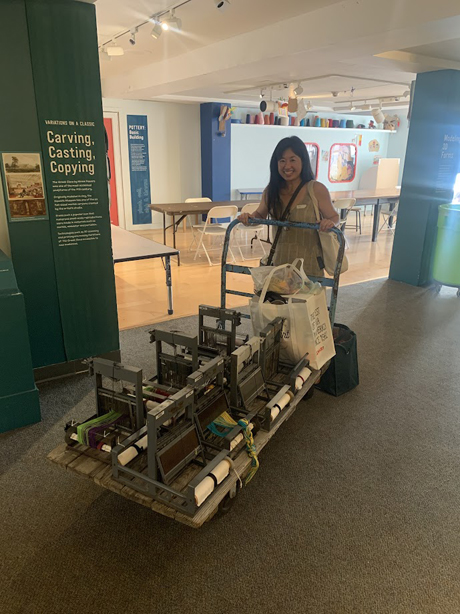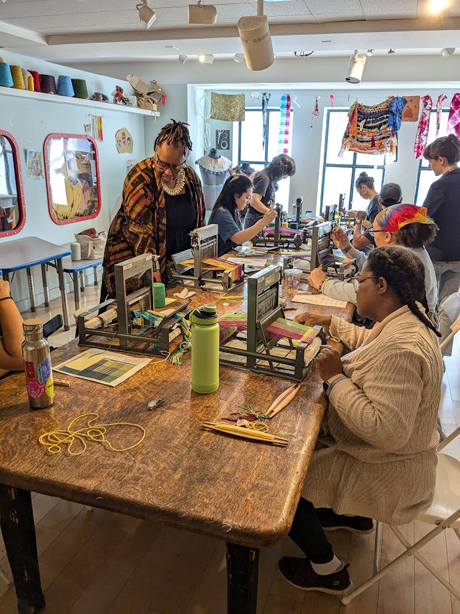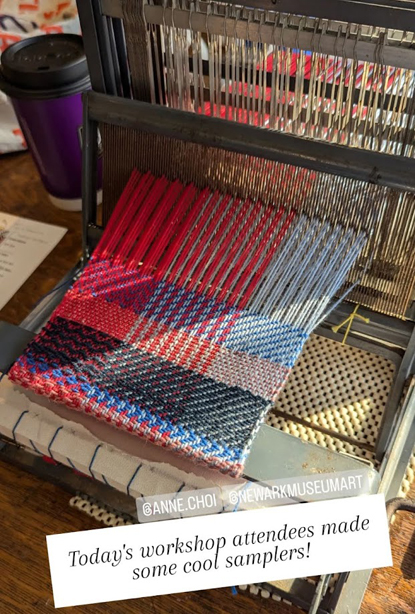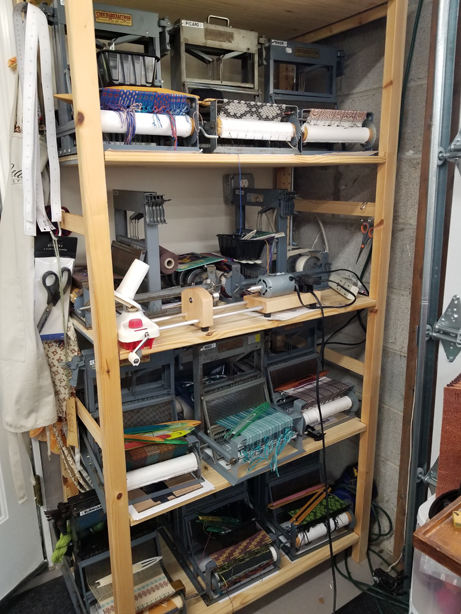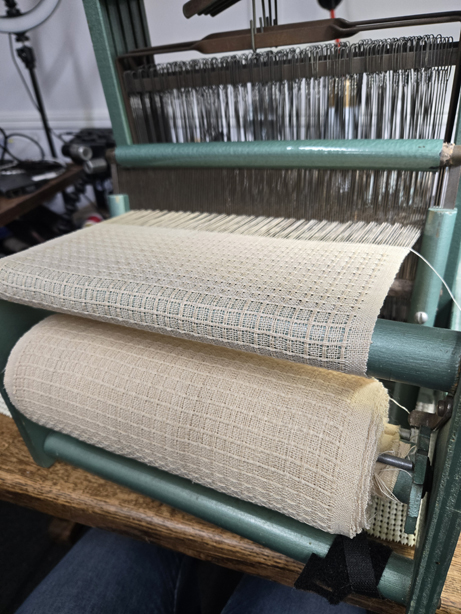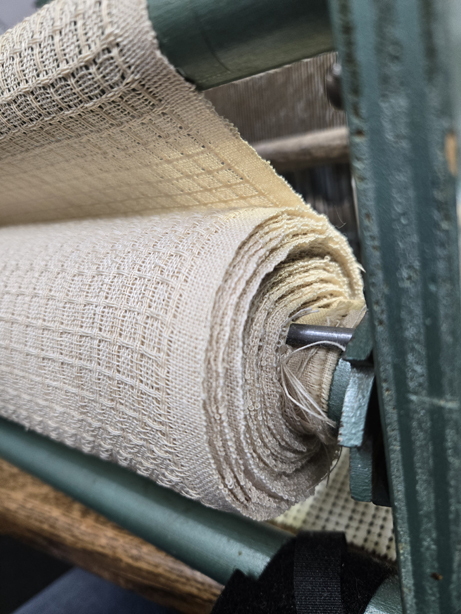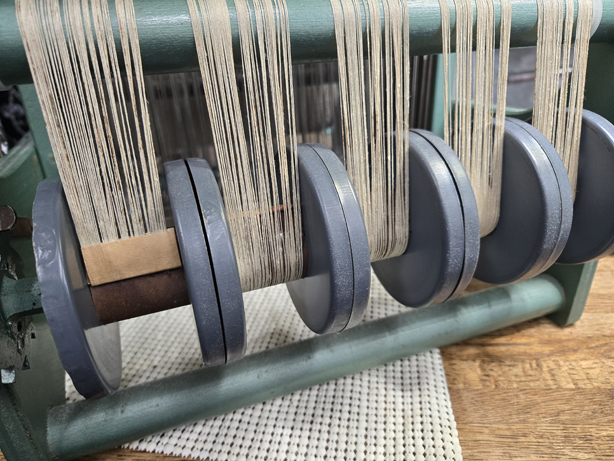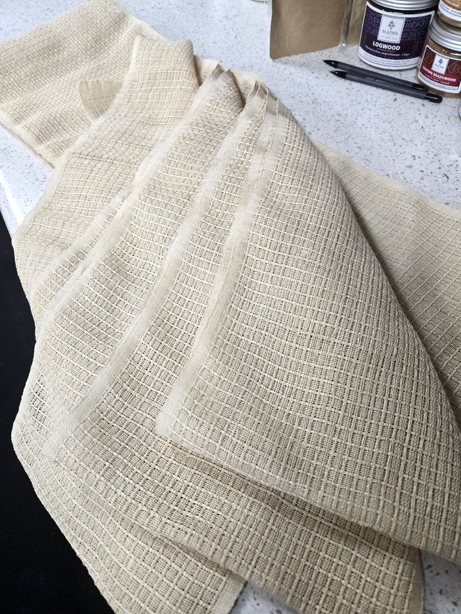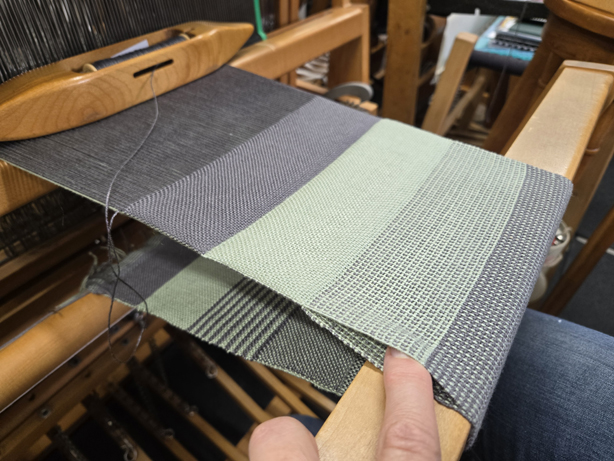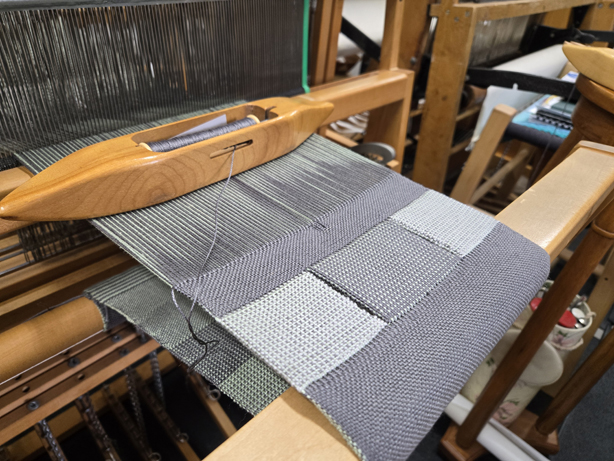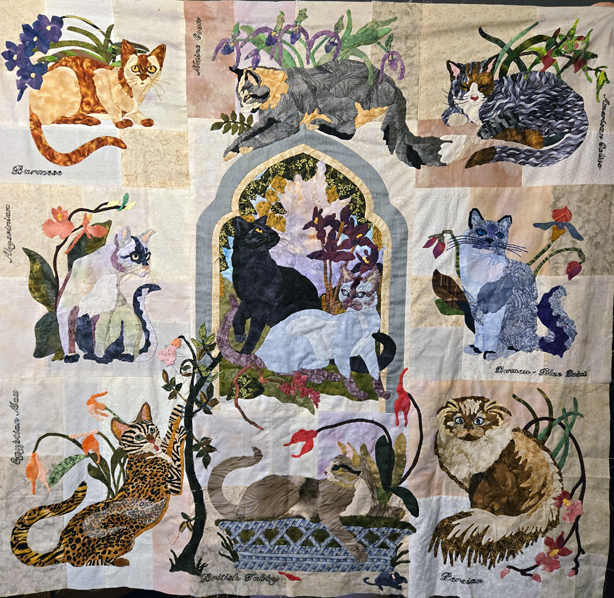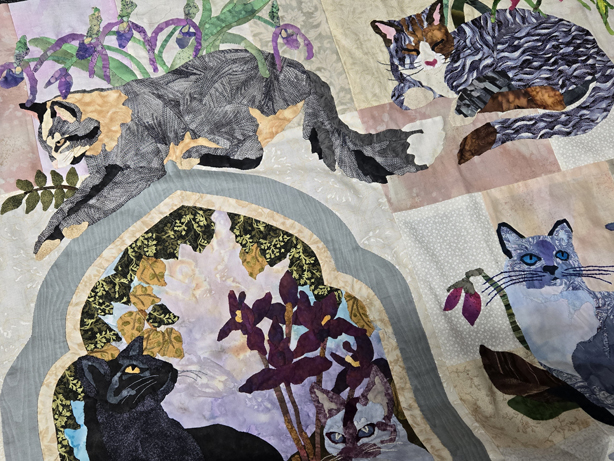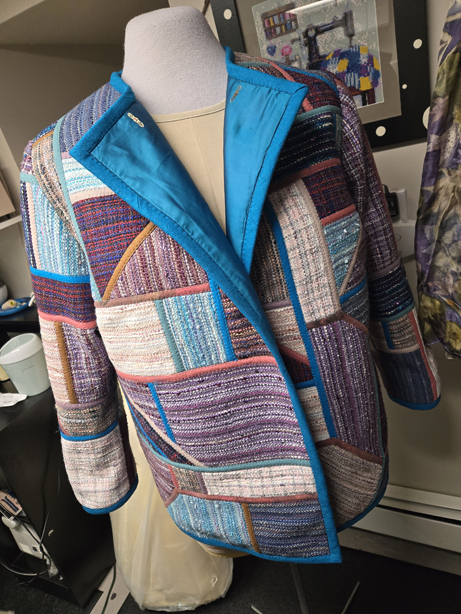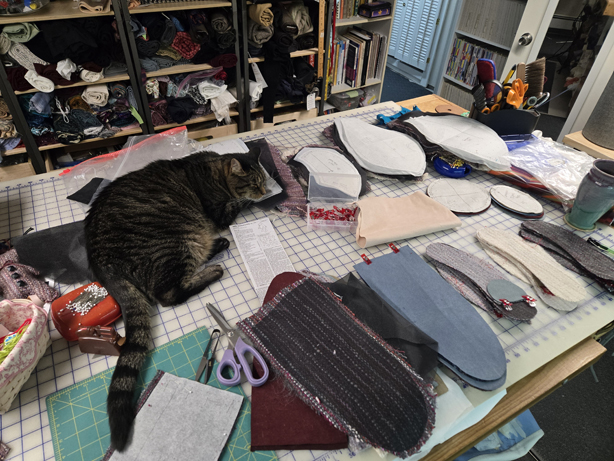When I wrote my last blog post two weeks ago, my world was full again, my son was home from a deployment in Syria, and all was well with the world. The next day, the Monday before Christmas, my daughter and I went to the theatre to see a lovely production of White Christmas at the Papermill Playhouse. It was a great show, and we drove home, completely unaware of what was happening in our house. A heating pipe burst (actually turns out in four places), in the back of my daughter’s second floor bedroom, and while we were gone, it flooded the back half of her room, and was raining through the ceiling fan of the floor below. We did our best to figure out how to shut off the water, call the police (who were kind and supportive but not very helpful), call the plumber hotline at 11pm the night before Christmas Eve, drag out rugs and debris that were most critical, file an online insurance claim, and realizing we had no water until the plumber could get there in the morning, went out to an all night QuickChek (which my daughter apparently knows well since she works the night shift), and a stop at a Taco Bell, because it was 2am. I don’t ask, she was driving…
Christmas Eve was a parade of contractors, insurance reps, a restoration company, the plumber, all while I had promised a friend to drive her to the airport in what turned out to be a blinding snowstorm. You can’t make this stuff up. In it all, I stayed remarkably calm, because the alternative wasn’t very productive.
Christmas night, my wonderful son came over, helped me move anything that was not nailed down from the affected rooms, and we got take out Chinese. Not my best Christmas ever, but certainly a memorable one, and my son, who has been through hell and back, was the most amazing level headed, flexible, calm and decent human being, and I couldn’t be more proud of him.
8am the day after Christmas a crew showed up. And the mitigation work began. By noon my den looked like this.
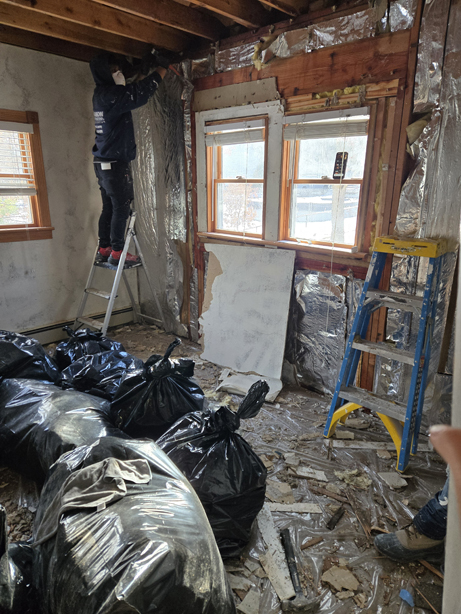
They moved the sofa, and put in my living room, where I already had two sofas. They put the credenza with the TV in front of the piano, in my dining room. They tried to work around a floor to ceiling bookcase, and a 1950’s phone booth. Don’t ask…
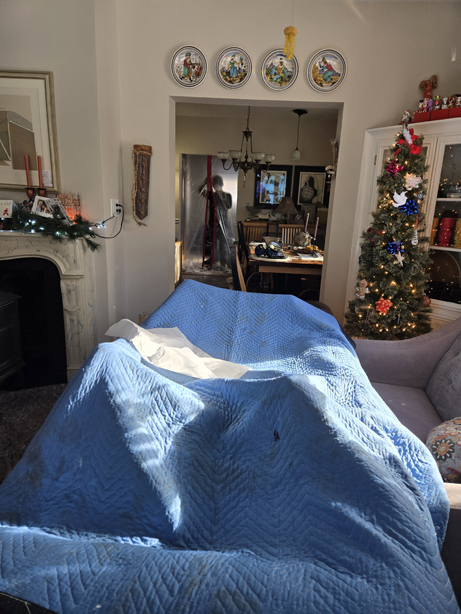
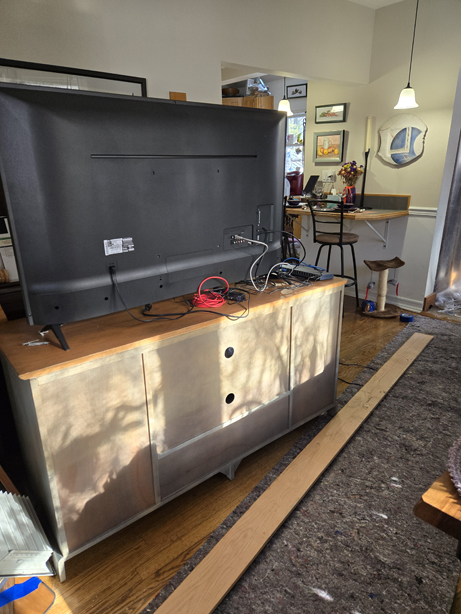
In the upstairs, my daughter worked all through Christmas night, since she works nights, and this was her night off, and moved everything from her room into a guest room. To save all of her stuff, I lost count after 18 loads of laundry. Time was of the essence, and since she works the night shift, filling in for a Christmas Eve overnight into Christmas morning, I jumped in to help. (My daughter is a critical care Vet Tech in an 24/7 vet hospital).
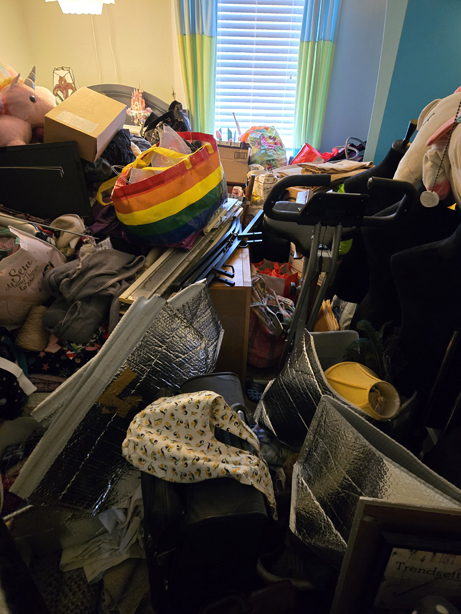
By the afternoon her room was filled with drying equipment.
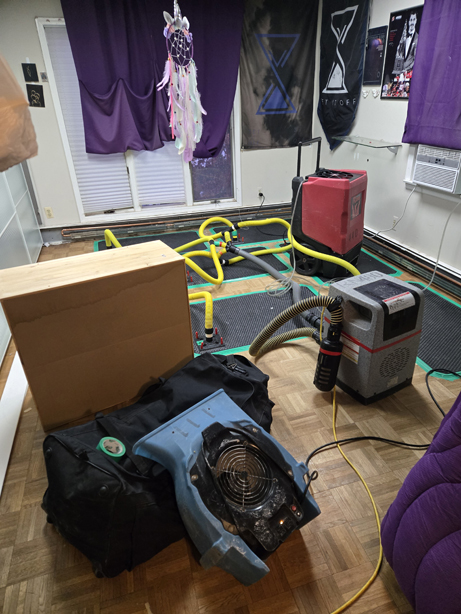
And same with the den, the noise was deafening. The only place I could escape the noise was my studio. There is a metaphor there I’m sure…
And so, for the next four days, I listened to the loud sound of machinery drying out my home, meanwhile, I hid in the only places unaffected, my weaving studio, my sewing studio, and my bedroom/office. This was not a bad thing.
I had planned to go to my mom’s after Christmas to show her the progress on The Quilt. Of course I had to cancel those plans because of the mitigation work, and since I was basically confined to the studio, I started winding skeins for dyeing. And I kept working on the twill sampler…
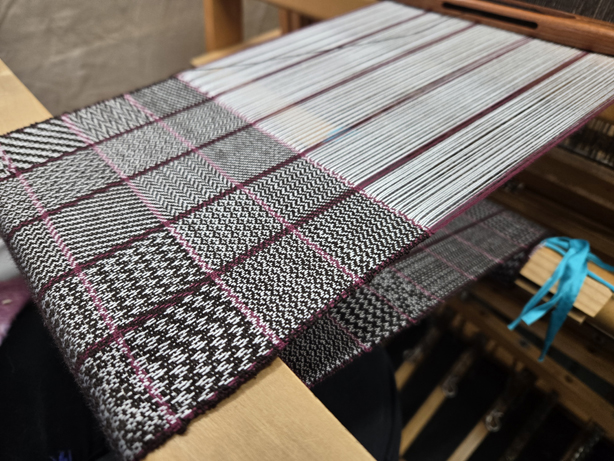
And then there were knots over the back. Yippee!
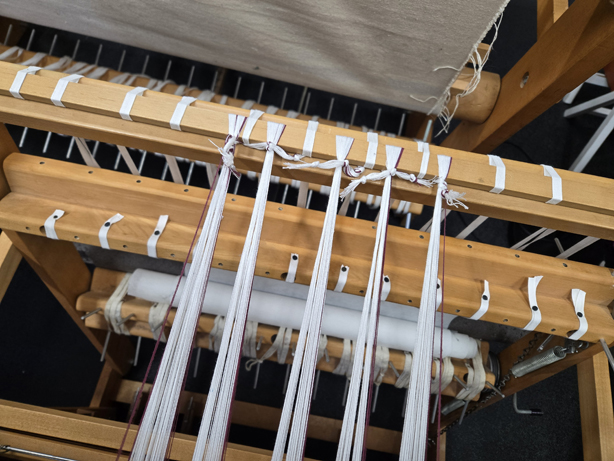
And I finished something like four towels worth on the new towel yardage…
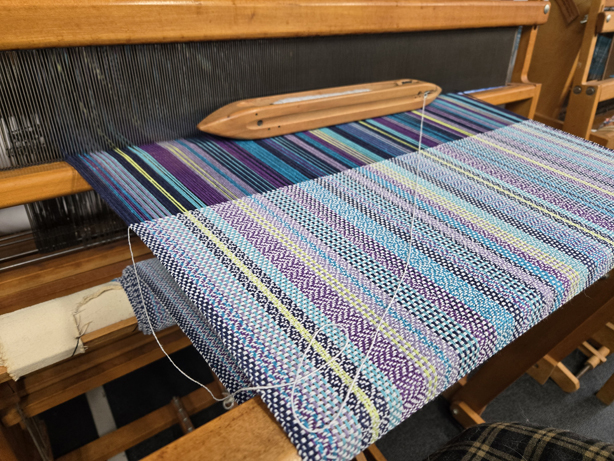
And I kept working on the quilt. New Year’s Eve, I went to a concert, part of Morris County’s First Night, the cello player was my teacher. I went with one of my music friends and we went out for sushi afterwards. I was home by 9pm. I spent the rest of New Year’s Eve working on the quilt. I finished all the appliqué work 30 minutes after midnight.
That spurred me on to get the borders on the quilt, which spurred me on to go out to a quilt store for backing fabric, batting and advice. I was out anyway picking up my work from the Shakespeare Theatre pop up shop, where it looks like they sold $700 worth of my work. They get to keep all the money. We do what we can to support the arts.
Anyway, I got lots of advice, about how to quilt, whether to cut the edge binding on the straight of grain, as suggested in the directions, or whether to cut it on the bias, which, why wouldn’t you do that? In the end, I did what I wanted, because why would I do anything else?
I came home, inventoried my work while I washed the backing fabric, and then set to work trying to figure out how I was going to quilt it. I decided that I’m not skilled enough to do free motion embroidery, and I didn’t want to see machine stitching anyway, to compete with all the hand appliqué. So I stitched in the ditch wherever background fabrics were pieced. It was enough quilting for a wall hanging, and by Friday night, last night actually, the quilting was done.
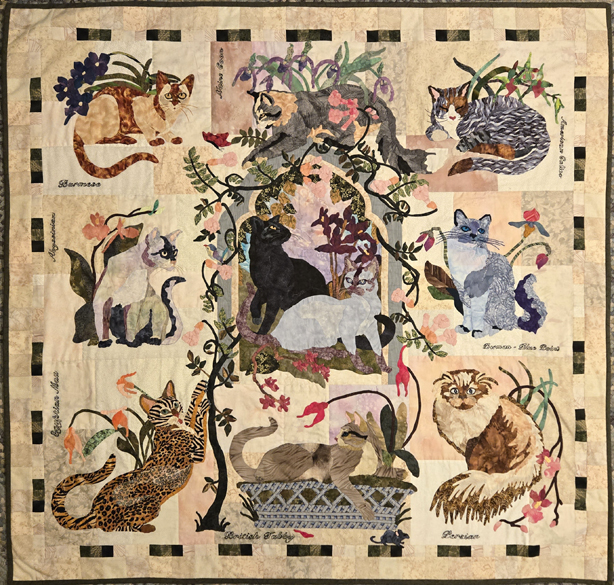
Today I attended a winter sow lecture at the library in the next town, and came home with a tray of pots filled with soil and seeds from a number of different perennials. They will get cold hardened outdoors, under chicken wire (which they provided as well), and be ready for the spring.
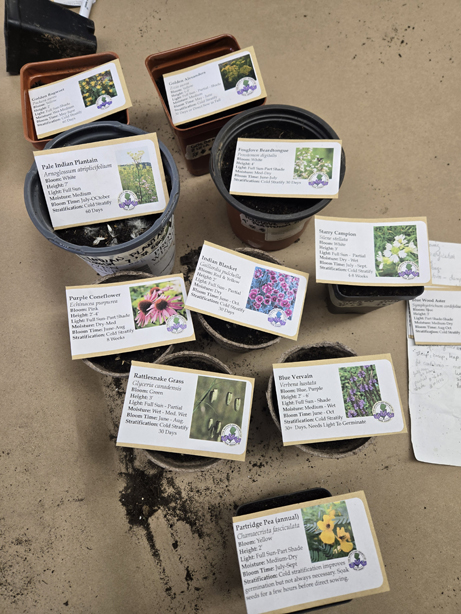
Then I went down to the sewing studio, and put on the binding. On the bias. Because I know better.
So the quilt is finished except for a rod pocket, I can’t believe it. My weaving friend Tommye Scanlin, wrote a lovely book called Marking Time with Fabric and Thread, just out in October. Tommye is an incredible tapestry artist, and the book is about marking time, fiber artists who use their medium to mark days, weeks, months, years. Journaling of sorts. It is a beautiful book, full of inspiration. And this quilt was like that. I spent the last 15 months or so working on it, through a challenging year, it was so centering and so calming, and one of the most important things I’ve done in recent years. All for my mom, who wanted to make this but her eyes and hands at 93, just can’t. So mom, this one is all for you. Thank you for the gift this quilt was in helping me mark time.
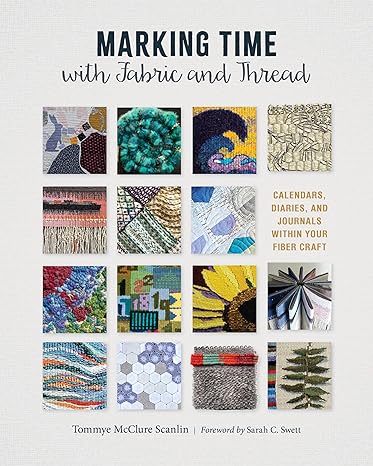
So the carrying yarn thing in the title? 1/4 of my daughter’s floor to ceiling 12 feet of wall closets, is full of yarn. She had some pretty great stuff in there. (Which I’m stealing, she doesn’t read my blog!) I started carrying all the yarn down to the weaving studio to figure out where to put it. The knitting machines are now down in the weaving studio. This is going to take a long time to sort out, but ultimately, we lost nothing. Everything was cleanable, and salvageable, including the wool rugs, and I’m thinking of rehoming the TV and credenza because I don’t ever watch TV, and turning the den into a music room, with the piano, the cello, and all my recorders, music stands, and music. I’m part of the music world now and getting together at peoples homes to just play is a real joy. I want to have that space too. I even brought my cello, beginner that I am, to a rehearsal of Christmas music with some of the newer recorder players, the Monday right before the flood, and held my own playing the bass line, which I knew well on the recorder, but now I could play it on the cello.
So my world going into 2025, after 16 years of blogging, is a little turned upside down, but I have friends, I have places to gather with friends, I have plants patiently doing their winter thing, I have music, I have yarn, I have some fresh MX dyes on their way from Prochem, and I have projects waiting to help me mark time. And I have a quilt ready to take and give to my mom. All is well with the world, at least in my little corner. Eventually reconstruction will begin, but for now the house is quiet again. Happy New Year to all of my readers who have stuck with me over the last 16 years, I hope you find lots of new adventures, things to learn, and new friends in the new year.
Stay tuned…
